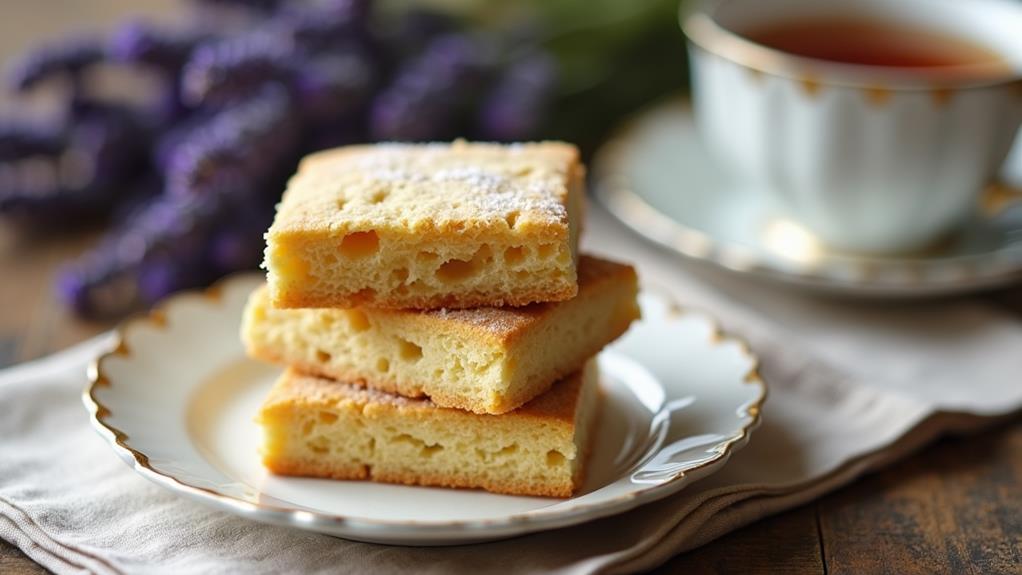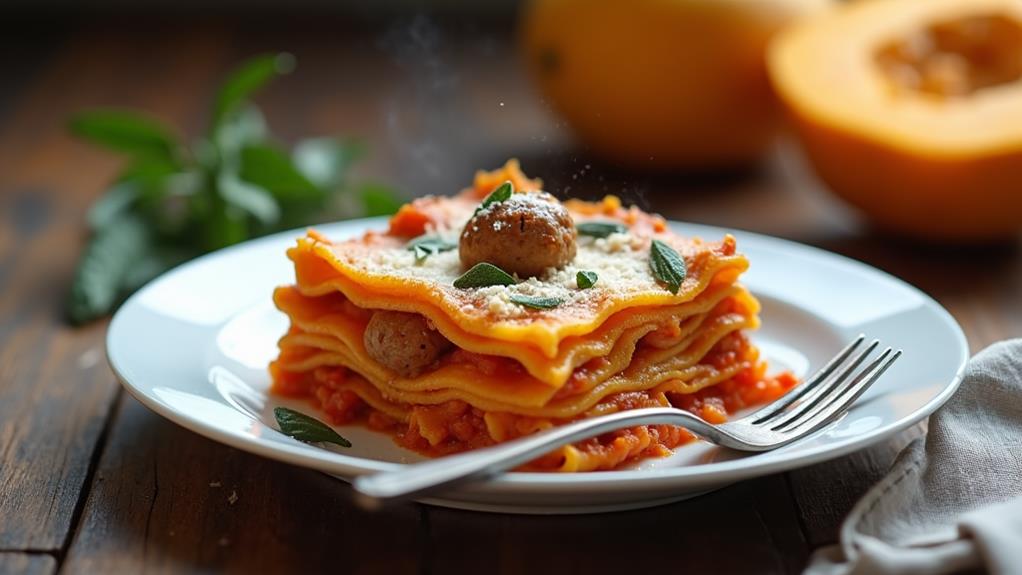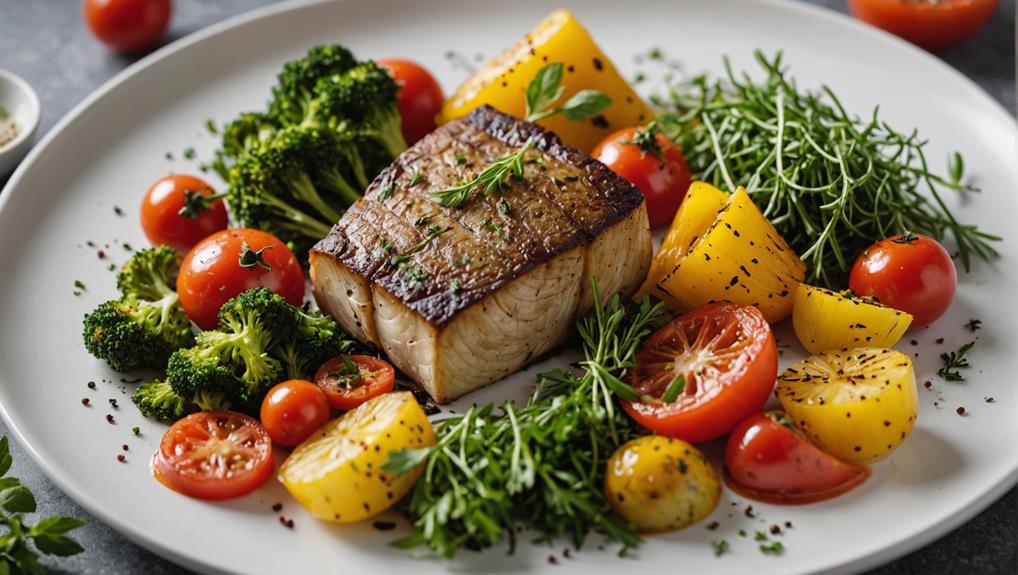You might be surprised to learn that shortbread cookies, despite their rich and buttery nature, originated as a humble byproduct of bread-making in medieval Scotland. These crisp, crumbly treats have since evolved into a beloved confection enjoyed worldwide. While the classic recipe calls for just three simple ingredients – butter, sugar, and flour – there's an art to achieving the perfect texture and flavor. Whether you're a baking novice or a seasoned pro, mastering the technique of shortbread can open doors to countless variations and creative twists on this timeless classic.
Key Takeaways
- Traditional Scottish cookies made with flour, butter, and sugar, known for their rich, buttery flavor.
- Key to perfect shortbread is high-quality butter and gentle handling of the dough to maintain a delicate texture.
- Creaming butter and sugar until light and fluffy is crucial for achieving the signature melt-in-your-mouth consistency.
- Shortbread can be shaped into rectangles, triangles, or pressed into a pan and scored after baking.
- These versatile cookies pair well with tea, make great gifts, and can be customized with various flavors like lemon or lavender.
History
The history of shortbread cookies dates back to medieval Scotland in the 12th century. Originally, these treats were made from leftover bread dough that was dried out in a low oven until it became hard and crisp. Over time, the recipe evolved, and bakers began to replace the yeast with butter, creating a richer, more delicate cookie.
You'll find that shortbread's popularity grew significantly during the reign of Mary, Queen of Scots, in the 16th century. She was particularly fond of these buttery treats, which were often flavored with caraway seeds. As shortbread became more refined, it was reserved for special occasions like weddings, Christmas, and Hogmanay (Scottish New Year).
In the 18th century, shortbread recipes were further perfected, resulting in the tender, crumbly texture we know today. The cookies became a symbol of Scottish hospitality, often given as gifts or served to guests.
As Scottish immigrants spread across the world, they brought their beloved shortbread recipes with them, introducing these delightful cookies to a global audience.
Recipe
Buttery shortbread cookies are a quintessential treat that epitomizes simplicity and indulgence. With their rich, crumbly texture and melt-in-your-mouth quality, these classic Scottish biscuits have been cherished for generations. Their enduring popularity is a testament to the perfect balance of flavors achieved with just a handful of high-quality ingredients.
This recipe yields a batch of traditional shortbread cookies that are perfect for any occasion. Whether you're serving them with afternoon tea, gifting them to friends, or simply enjoying them as a sweet snack, these buttery delights are sure to impress. The key to perfect shortbread lies in using the best butter you can find and handling the dough with care to achieve that signature tender crumb.
- 2 cups (250g) all-purpose flour
- 1 cup (227g) unsalted butter, softened
- 1/2 cup (100g) granulated sugar
- 1/4 teaspoon salt
- 1 teaspoon vanilla extract
Preheat your oven to 350°F (175°C). In a large bowl, cream together the softened butter and sugar until light and fluffy. Add the vanilla extract and mix well. Gradually incorporate the flour and salt, mixing until a soft dough forms.
Press the dough into an ungreased 9-inch (23cm) square baking pan, ensuring an even thickness. Prick the surface with a fork in a decorative pattern. Bake for 20-25 minutes, or until the edges are lightly golden. Remove from the oven and immediately score into squares or rectangles while still hot. Allow to cool completely in the pan before breaking along the scored lines.
For the best results, use high-quality butter as it's the star ingredient in shortbread. Avoid overworking the dough to maintain a tender texture. If you prefer, you can roll out the dough and cut it into shapes instead of baking in a pan.
Store the cooled cookies in an airtight container at room temperature for up to a week, or freeze for longer storage. Experiment with flavors by adding lemon zest, lavender, or even a drizzle of chocolate for variety.
Cooking Steps
To create these buttery shortbread cookies, you'll begin by creaming the butter and sugar together, then adding vanilla extract for flavor.
Next, you'll carefully incorporate the flour and salt, forming a soft dough that you'll press into a baking pan.
Step 1. Cream Butter and Sugar
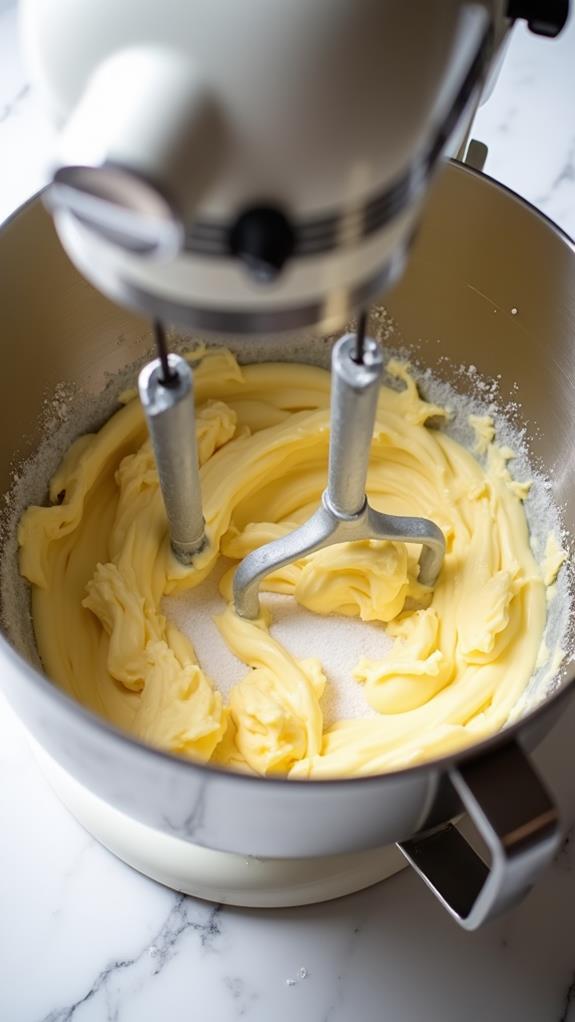
Starting with the foundation of these delectable cookies, you'll cream together the softened butter and sugar. This crucial step ensures your shortbread achieves that coveted melt-in-your-mouth texture.
Begin by placing the softened butter and sugar in a large mixing bowl. Using an electric mixer or a wooden spoon, beat the ingredients vigorously until they're well combined and the mixture becomes light and fluffy. This process typically takes about 3-5 minutes with an electric mixer or 5-7 minutes by hand.
As you cream the butter and sugar, you'll notice the color lighten and the volume increase. This transformation occurs as air is incorporated into the mixture, creating tiny pockets that contribute to the cookie's tender crumb.
Don't rush this step; thorough creaming is essential for achieving the perfect shortbread texture. Once your mixture is pale and fluffy, stop mixing to avoid overworking. Overbeating can lead to tough cookies, so it's important to strike the right balance.
With your butter and sugar perfectly creamed, you've laid the groundwork for irresistibly buttery shortbread cookies.
Step 2. Add Vanilla Extract
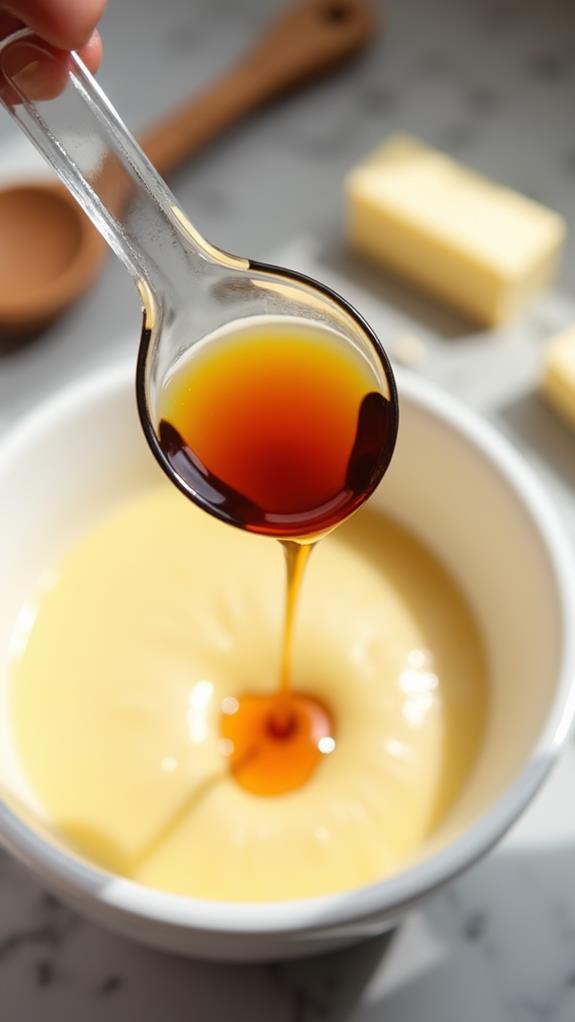
With your butter and sugar perfectly creamed, it's time to add the vanilla extract. This step, though simple, is crucial for infusing your shortbread with a rich, aromatic flavor that complements the buttery base. Measure out one teaspoon of high-quality vanilla extract and pour it into your mixture.
Using your electric mixer or wooden spoon, blend the vanilla thoroughly into the creamed butter and sugar. You'll want to mix until the vanilla is evenly distributed, which should take about 30 seconds on medium speed if you're using an electric mixer. If you're mixing by hand, stir vigorously for about a minute.
As you incorporate the vanilla, you'll notice its distinctive scent permeating the mixture. This fragrant addition will elevate your shortbread from good to exceptional, enhancing the overall taste profile.
Don't be tempted to add more than the recipe calls for, as too much vanilla can overpower the delicate butter flavor.
Once you've mixed in the vanilla extract, your batter is primed for the next step: adding the dry ingredients. This flavor-packed mixture will serve as the perfect foundation for your buttery shortbread cookies.
Step 3. Incorporate Flour and Salt
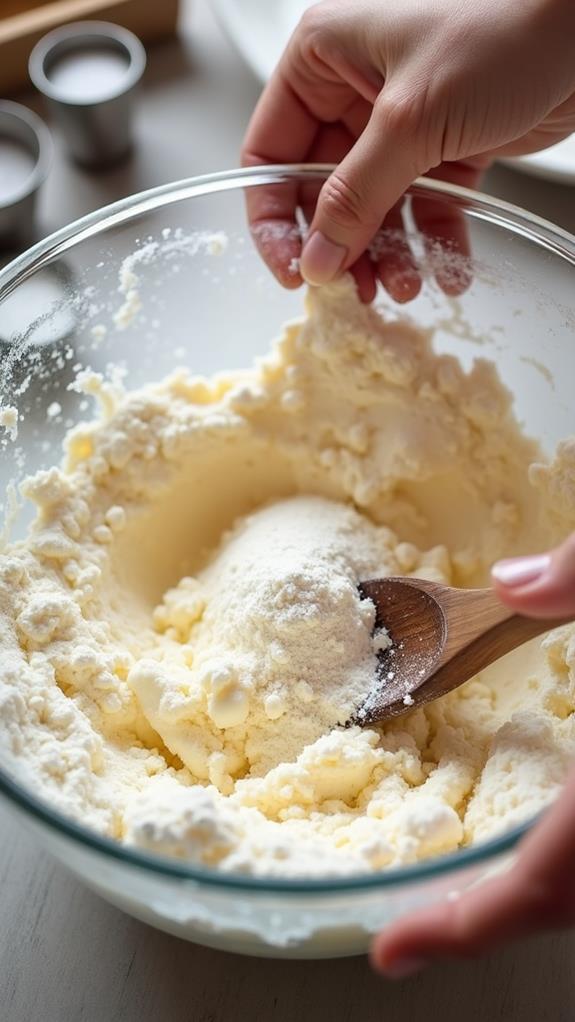
Now that you've mixed in the vanilla extract, it's time to add the dry ingredients. Gradually incorporate the flour and salt into your butter mixture, using a wooden spoon or a stand mixer on low speed.
Start by adding about a third of the flour mixture, stirring until it's mostly combined. Continue adding the remaining flour in two more batches, mixing gently after each addition.
As you incorporate the dry ingredients, you'll notice the dough becoming stiffer and more cohesive. Be careful not to overmix, as this can lead to tough cookies. Instead, stop mixing as soon as the flour is just incorporated and no streaks remain visible.
The dough should be soft and slightly crumbly but hold together when pressed. If the dough seems too dry, you can add a teaspoon of milk or cream to help it come together. Conversely, if it's too sticky, sprinkle in a little extra flour.
Once you've achieved the right consistency, you're ready to shape your shortbread for baking. Remember, the key to perfect shortbread is handling the dough gently to maintain its delicate texture.
Step 4. Press Dough Into Pan
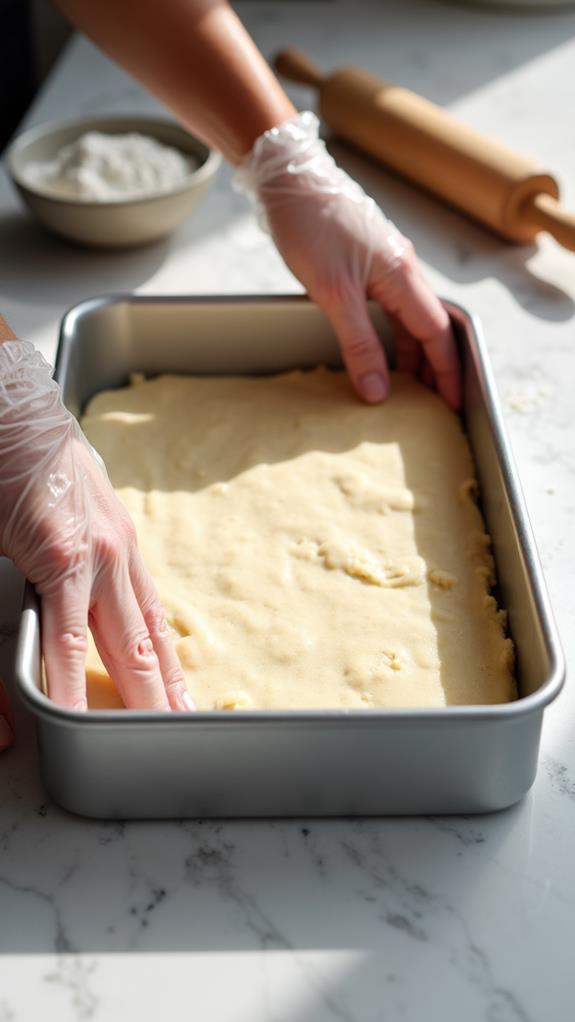
After you've mixed your dough to the right consistency, it's time to prepare it for baking. Take your ungreased 9-inch square baking pan and begin pressing the dough into it. Use your fingers to spread the dough evenly across the bottom of the pan, ensuring it reaches all corners.
As you work, apply gentle but firm pressure to create a uniform thickness throughout. Pay special attention to the edges, where the dough might be thinner. Press it up slightly along the sides to prevent over-browning during baking.
Once you've achieved an even layer, use the palm of your hand to smooth the surface, creating a professional-looking finish. For added texture and visual appeal, take a fork and prick the surface of the dough in a decorative pattern. This not only enhances the appearance but also helps prevent the shortbread from puffing up unevenly during baking.
You can create a simple grid pattern or get creative with diagonal lines or even intricate designs. Remember, the key is to press the dough firmly enough to hold its shape but not so hard that you compact it excessively, which could result in a tough texture.
Step 5. Bake and Score Shortbread

Precision is key when baking and scoring your shortbread. Place the pan in the preheated oven and set a timer for 20 minutes. Keep a close eye on the edges, as they'll turn golden brown when ready. If needed, add an extra 2-5 minutes, but be careful not to overbake. The center should remain pale, ensuring that classic shortbread texture.
Once baked, remove the pan from the oven immediately. While the shortbread is still hot, use a sharp knife to score it into your desired shapes. This step is crucial, as it'll make breaking the cooled shortbread much easier. For traditional rectangles, score the surface into three long strips, then make perpendicular cuts to create smaller pieces. If you prefer triangles, score diagonally across the pan.
After scoring, let the shortbread cool completely in the pan. This allows the butter to solidify, giving the cookies their signature crumbly texture.
Once cooled, break along the scored lines for perfectly shaped pieces. Your homemade shortbread is now ready to be enjoyed or stored for later indulgence.
Final Thoughts
While mastering the art of shortbread may take a few attempts, you'll find that the effort is well worth it. These buttery cookies are a testament to the beauty of simplicity in baking.
As you become more comfortable with the basic recipe, don't hesitate to experiment with different flavors and shapes. You might try adding citrus zest, nuts, or even a touch of rosemary for a savory twist.
Remember, the key to perfect shortbread lies in the quality of your ingredients and your technique. Don't rush the process; take your time creaming the butter and sugar, and be gentle when incorporating the flour.
If you're having trouble achieving the right texture, try chilling the dough before baking. This can help prevent spreading and maintain those crisp, clean edges.
As you share your homemade shortbread with friends and family, you'll likely find it becomes a cherished part of your baking repertoire.
Whether enjoyed with a cup of tea or given as a thoughtful gift, these cookies are sure to bring joy to all who taste them.

